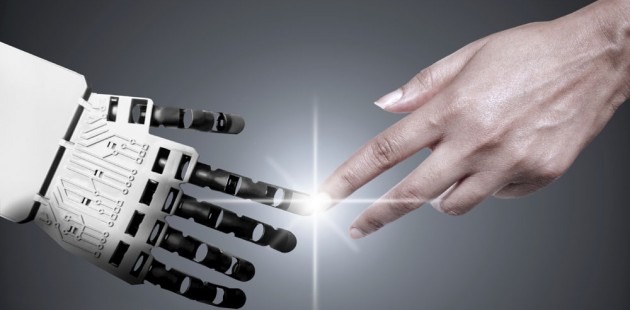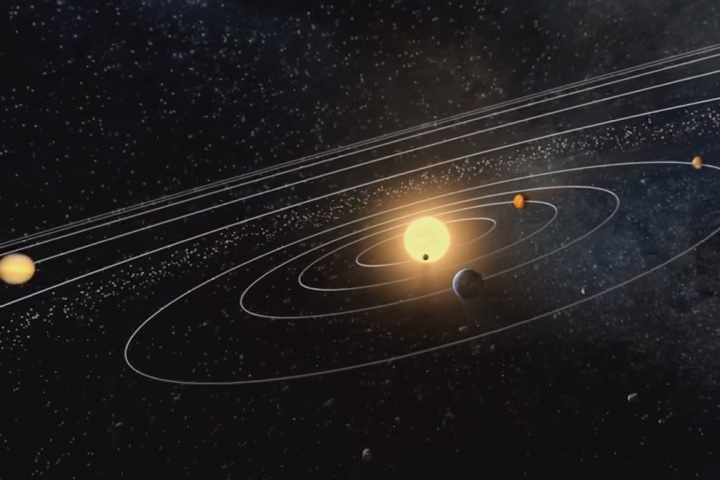Latest study that uses AI discovers 8 probable alien “technosignatures” near distant stars
02/09/2023 / By Kevin Hughes

A study published in Nature Astronomy that used a new machine learning algorithm discovered eight extraterrestrial signatures, which appeared to be the trademarks of advanced technology.
Lead study author Peter Ma of the University of Toronto (UToronto) explained how he and his colleagues employed a technique called “semi-unsupervised learning.” The method combines input from data marked by humans to make it easier for the algorithm to create predictions and autonomous processing by the artificial intelligence in the form of picking patterns out of huge data sets.
Ma and his colleagues trained the algorithm to tell the difference between human-caused signals from Earth and radio signals that come from another place. Radio waves are ordinary targets in the search for extraterrestrial intelligence (SETI) because they can travel various distances through space and remain mostly unhindered by obstructions such as interstellar dust clouds.
They tried various algorithms to reduce false positives, and analyzed 150 terabytes of data collected by the Green Bank Telescope in West Virginia. Of the 820 stars near Earth that they observed, they discovered eight earlier overlooked signals from five stars situated between 30 light-years and 90 light-years away from Earth.
According to researchers at the Breakthrough Listen project, the eight signals had two features in common with signals that might be produced by intelligent aliens.
“First, they are present when we look at the star and absent when we look away — as opposed to local interference, which is generally always present. Second, the signals change in frequency over time in a way that makes them appear far from the telescope,” Steve Croft, a scientist for Breakthrough Listen, said in a release.
AI shows promise in tracking potential alien life
According to the scientists, the greatest strength of the algorithm lies in its ability to organize data from telescopes into categories. This has allowed them to distinguish between genuine alien signals and “noise” or interference.
“In many of our observations, there is a lot of interference. We need to distinguish the exciting radio signals in space from the uninteresting radio signals from Earth,” Ma commented. (Related: Signs of alien civilization: Did astronomers detect “technosignatures?”)
In spite of this, the researchers lauded the use of AI to look for extraterrestrial intelligence.
“I am impressed by how well this approach has performed on the search for extraterrestrial intelligence,” wrote study co-author and UToronto astronomer Cherry Ng in a press release. “With the help of artificial intelligence, I’m optimistic that we’ll be able to better quantify the likelihood of the presence of extraterrestrial signals from other civilizations.”
A brief follow-up observation at the Green Bank Telescope did not yield the much-awaited signals, however.
“With our new technique, combined with the next generation of telescopes, we hope that machine learning can take us from searching hundreds of stars to searching millions,” Ma said. He added that their work will help accelerate the rate scientists are able to make discoveries in their grand effort know if humans are truly alone in the universe.
Watch this video that talks about the five most mysterious signals from space.
This video is from the InterestingClips channel on Brighteon.com.
More related stories:
Astronomers say “technosignatures” can be used to find advanced alien civilizations.
Breakthrough Listen Project and NASA collaborate on the search for advanced alien civilizations.
Astronomers develop new telescope system that can scan for signs of alien technology.
Study: Mysterious bright light spotted in February was a distant star being squeezed by a black hole.
Sources include:
Submit a correction >>
Tagged Under:
alien life, alien signals, aliens, artificial intelligence, breakthrough, computing, cosmic, discoveries, extraterrestrial, future science, future tech, information technology, machine learning, research, SETI, Space, space exploration, technosignatures, UFO
This article may contain statements that reflect the opinion of the author
RECENT NEWS & ARTICLES
COPYRIGHT © 2018 BREAKTHROUGH.NEWS
All content posted on this site is protected under Free Speech. Breakthrough.news is not responsible for content written by contributing authors. The information on this site is provided for educational and entertainment purposes only. It is not intended as a substitute for professional advice of any kind. Breakthrough.news assumes no responsibility for the use or misuse of this material. All trademarks, registered trademarks and service marks mentioned on this site are the property of their respective owners.



















